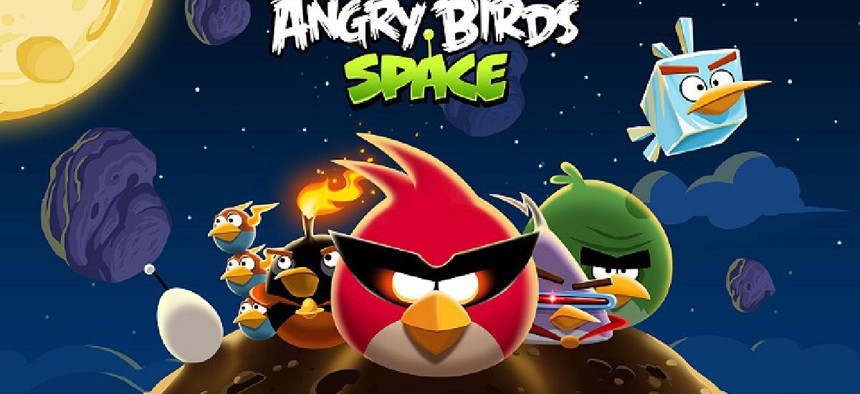
Image via Rovio Entertainment
NASA, Angry Birds and the Question of Gamification
NASA and Angry Birds have teamed up to spread the word about Curiosity.
I remember the first time I played Angry Birds on an iPhone, slingshotting differently powered birds at a horde of evil green pigs and thinking, " This? This?? How has this been the top App in iTunes Store for months?" And then I shut up and kept playing--and I understood.
The addicting power of games, and their proliferation into each of our pockets, has created a new opportunity for organizations with a message. Each year, companies pay millions for product placements in videogames (last year Farmer's Insurance bought virtual real estate in the Facebook game CityVille). Now, the public sector is finding creative ways to get in on the act too.
At Excellence in Government Live on Sept. 6, Director of the Mars Exploration Program Doug McCustion told the audience that NASA had teamed with Rovio, the team behind Angry Birds to spread the word about the landing of the Curiosity rover.
David Weaver, associate administrator for communications at NASA Headquarters, told Mashable last month that "Rovio is teaching huge new audiences about NASA’s missions to Mars thanks to this collaboration. It’s a great way to introduce both kids and adults to the wonders of the planet in a fun and entertaining way."
NASA isn't the first government entity to use gaming to engage the public. Back in 2002, the US Army released a free video game called America's Army. Designed as a public relations effort to boost recruitment , the game put players in the virtual boots of a solider, putting them through Special Forces training, medic school and using weapons identical to those used by active duty servicemen. By 2008, the game's popularity was waning but, according to an article in GamePolitics , the Army reported to Congress that “30 percent of all Americans age 16 to 24 had a more positive impression of the Army because of the game and, even more amazingly, the game had more impact on recruits than all other forms of Army advertising combined."
Both NASA's playful partnership with Angry Birds and the Army's use of games as a recruitment tool are examples of what's called "gamification." Gamification is defined as "the use of game design techniques, game thinking and game mechanics to enhance non-game contexts."
A recent article by Erica Swallow at Forbes gives a perfect example of how gamification can work--transforming something as mundane as IT customer service into a highly engaging competition:
Help desk software company Freshdesk launched its new gamified help desk product, Freskdesk Arcade , on Monday.
The platform enables agents to win points and earn badges for completing customer support tasks, including customizable games that can be created to align with business goals...Agents can level up from “Support Newbies” to “Help Gurus” and earn all kinds of digital bling, such as the “Speed Racer” and “Customer Wow Champ” trophies. Potentially the most coveted trophy of all, is the “Most Valuable Player” trophy, awarded monthly to top scorers.
The question isn't whether or not gamification is a compelling idea--it's (A) is it affordable and (B) are we creative enough to think of ways it can be done?
What do you think? How can your agency add elements of gamification to your internal processes or public affairs efforts? Share your ideas in the comments.
Want more Excellence in Government? Follow us on Twitter | Facebook | Google + | LinkedIn







